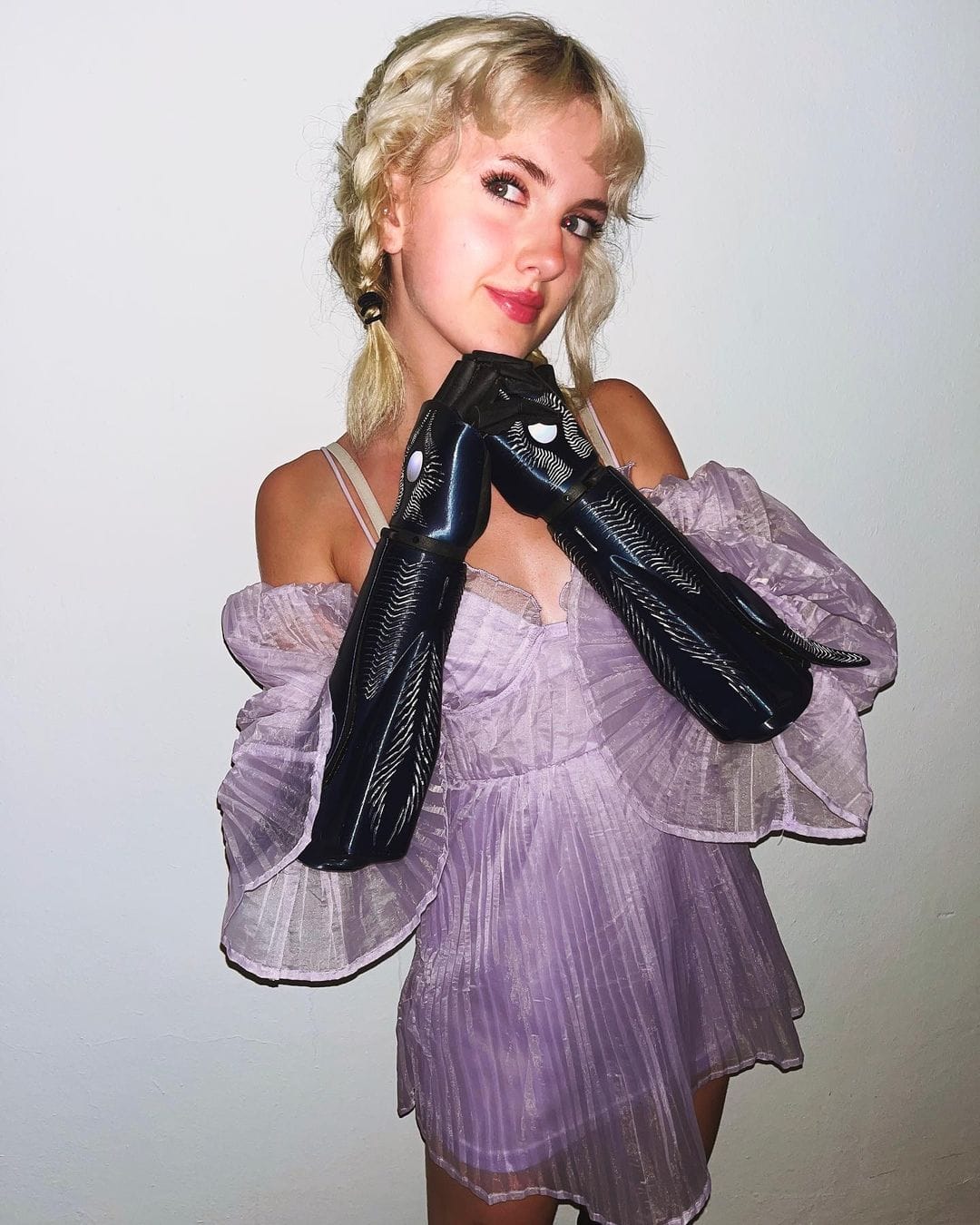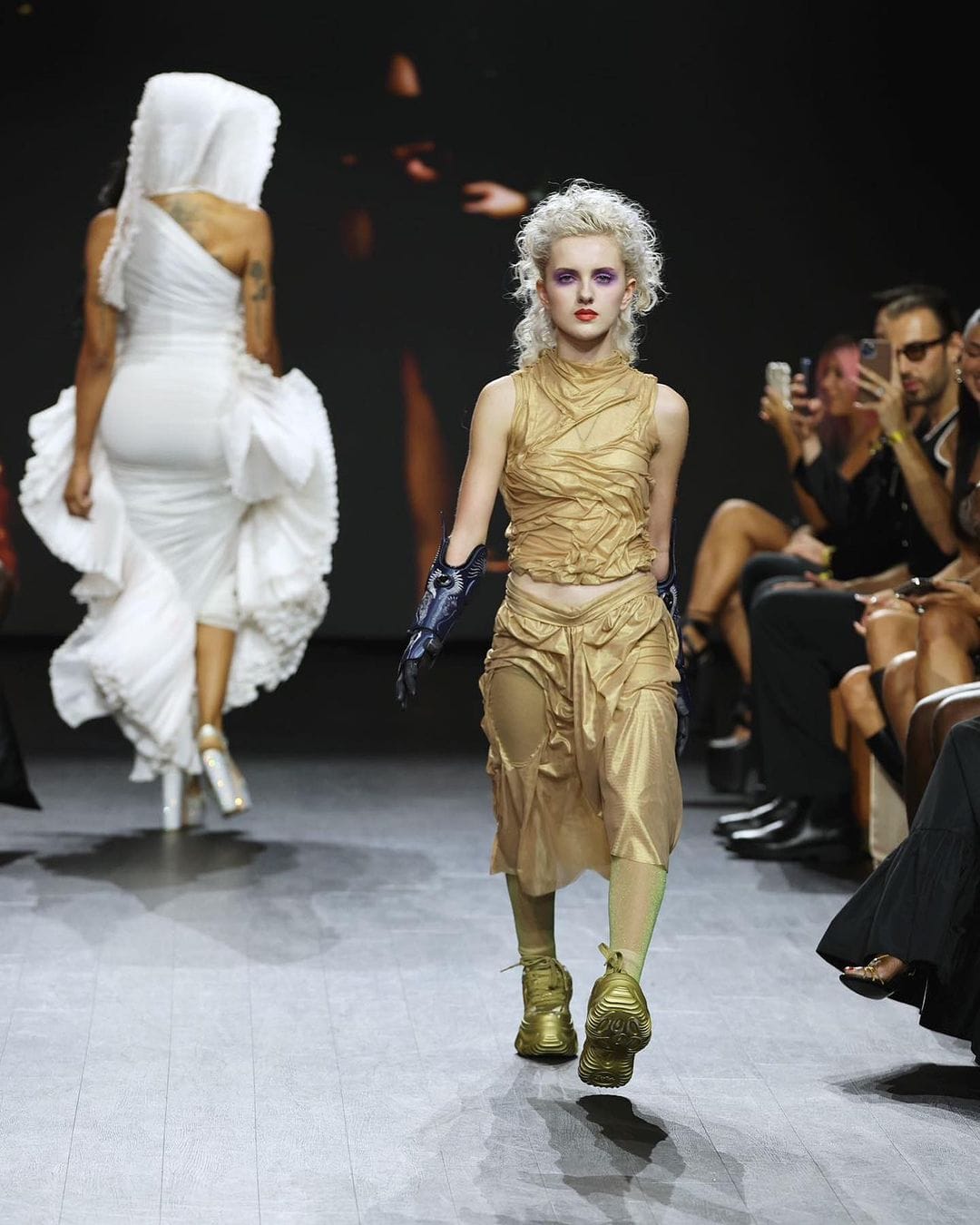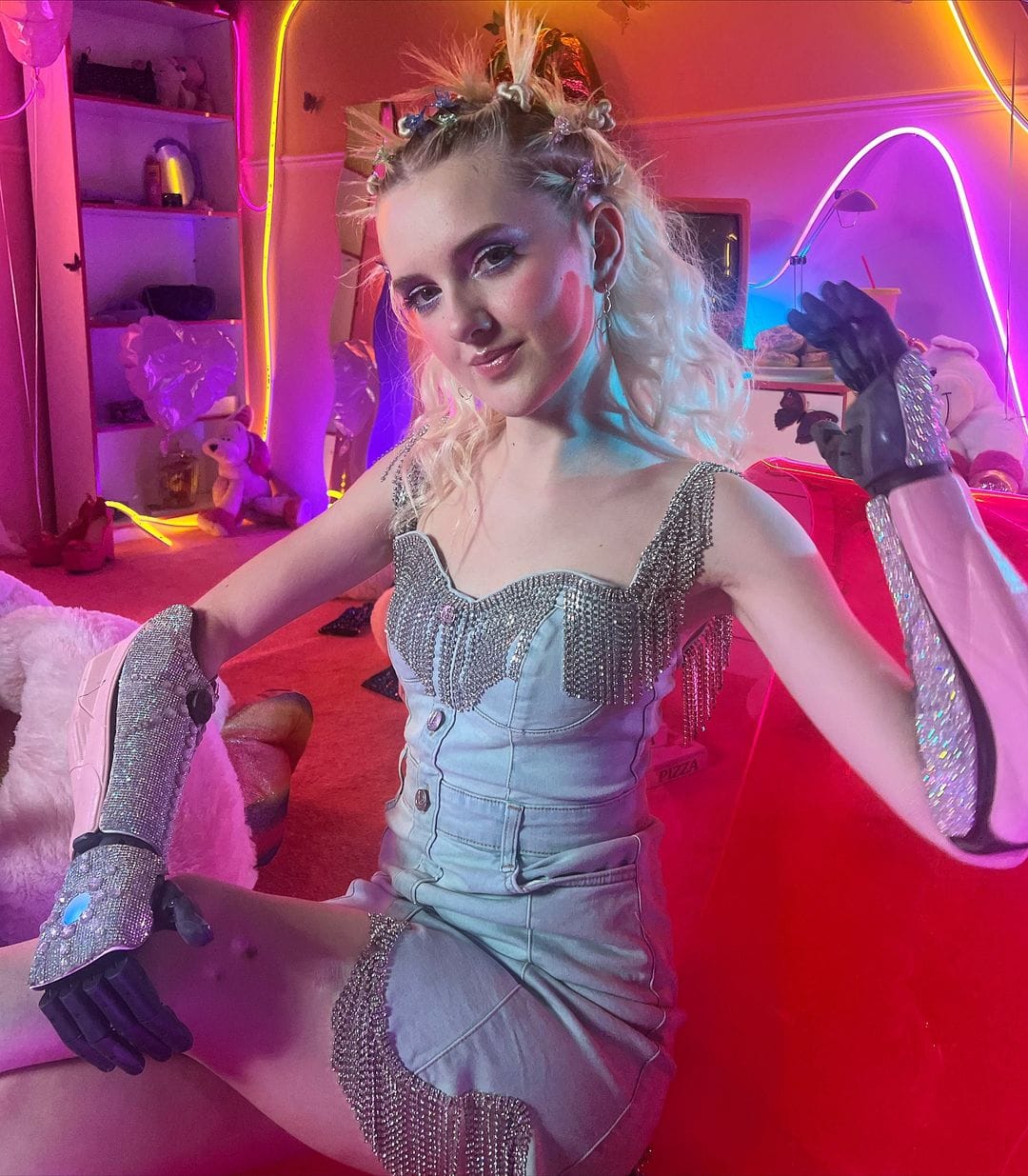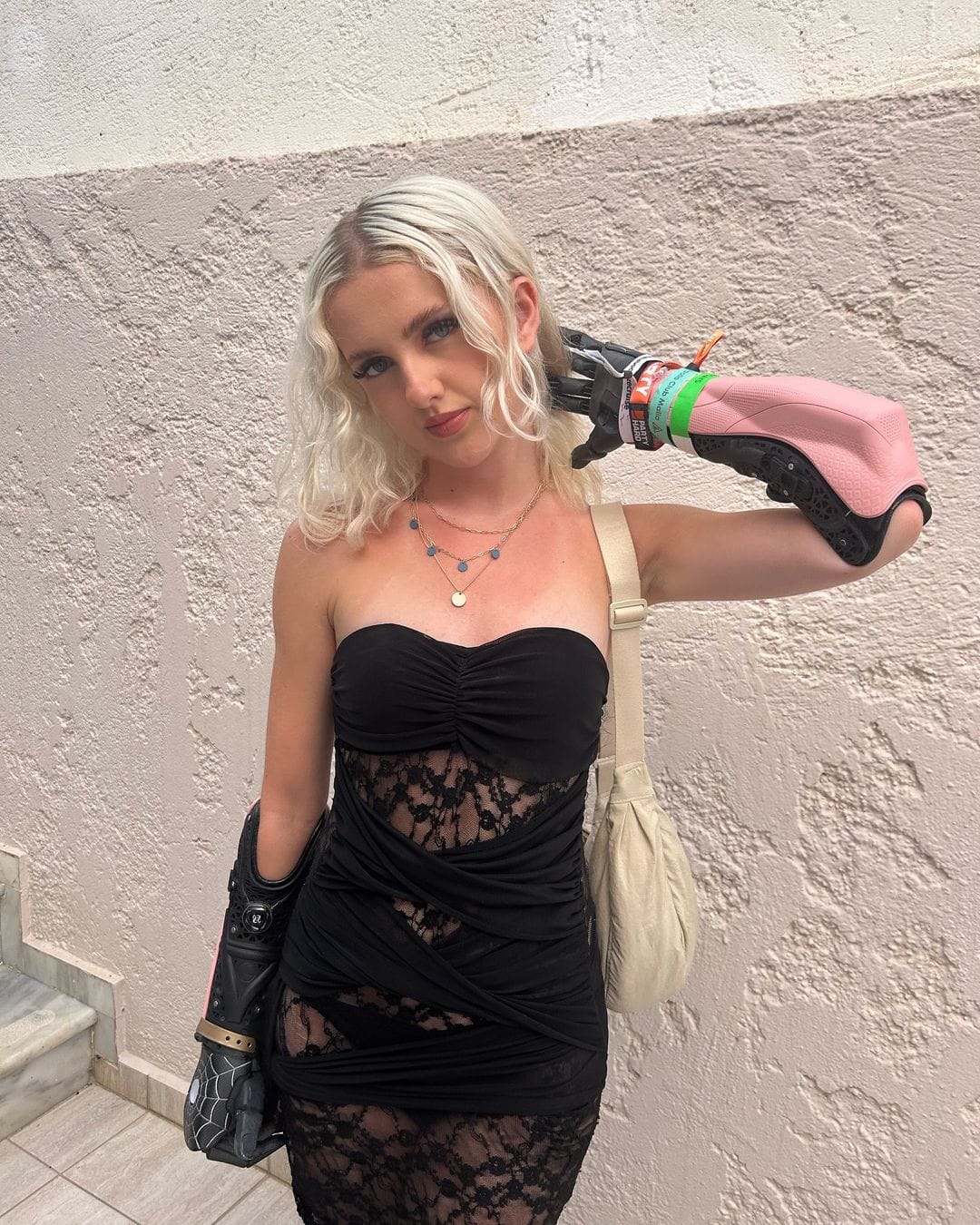British artist and bionic arm ambassador Tilly Lockey has been wearing prosthetic arms since she lost both of them to Meningococcal Septicaemia Strain B at the age of one. As a nine-year-old, she got her hands fitted with a pair of Hero Arms, bionic prosthetics from Open Bionics. Powered by sensors and other electronics, these 3D-printed prosthetics give Lockey much more mobility than other prosthetics on the market.

Now 18, Lockey is no longer just a wearer of the Hero Arms but also one of its proud developers. This means her Hero Arms cater to the needs of the disabled in a comprehensive way since they have been designed by a disabled person and made for other disabled people. One way this has manifested can be seen in how Hero Arms are designed to stand out, unlike other prosthetics that try to mimic natural human limbs.

To Lockey, this design choice is about making space for disabled people to embrace themselves fully. This means they do not have to conform to standards created by those with natural limbs; they can chart their path and live fully. Hero Arms by Tilly Lockey and Open Bionics is relevant to the United Nations Sustainable Development Goal of Reduced Inequalities.

Lockey showed her penchant for developing Hero Arms early on. In an interview with Wired Magazine, she recalled how she had given Open Bionics feedback on how stuffy they felt when she was first fitted with the Hero Arms at nine years old. A new design was made with better ventilation, something lighter to allow for further mobility. These days, Lockey keeps in daily contact with senior executives at Open Bionics, constantly working together to find innovative solutions to help the field of bionic prosthetics progress.
With almost 150 thousand followers on Instagram, Lockey also admitted in the interview that the most important thing she wants to use her platform for is the promotion of prosthesis manufacturers across the world so that disabled people everywhere can understand that there are now several options available to help them increase their quality of life. Lockey also cautioned that the most expensive prosthetics in the market do not necessarily mean they are the best. Different people have different needs. Hence, she encourages everyone to find what is best for them.

Tilly Lockey’s journey with Hero Arms, developed by Open Bionics, showcases a powerful narrative of empowerment, innovation, and inclusivity in the world of prosthetics. As both a user and developer, Lockey has played a pivotal role in designing functional bionic arms that celebrate the uniqueness of disabled individuals.
By moving away from the conventional approach of mimicking natural limbs, Lockey and Open Bionics have created prosthetics that encourage disabled people to embrace their identities fully and boldly. Her advocacy and work are also helping people redefine the landscape of prosthetics, ensuring that disabled people worldwide have access to innovative solutions that enhance their quality of life and empower them to live authentically.
Find out more about Bionic Arms and other initiatives by Tilly Lockey on her Instagram @tilly.lockey.
